- Home
- slideshows
- miscellaneous
- The best mechanical keyboards you can buy
The best mechanical keyboards you can buy
The best mechanical keyboard overall

The best mechanical keyboard for Mac
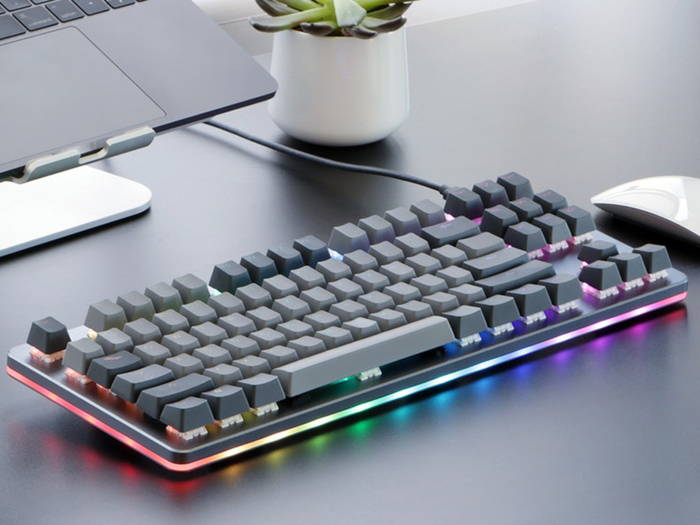
The Massdrop CTRL is seemingly built with Apple users in mind — a quick look at the product page will verify that. While the Magic Keyboard maintains the purely Apple approach to your desktop setup, the laptop-like typing experience leaves a lot to be desired.
There aren't many keyboards that seem at home with a Mac, and that makes the CTRL fairly unique in the mechanical keyboard market.
Massdrop uses a solid aluminum frame and tenkeyless design — no number pad. The included keycap set is black and gray, which is perfect for a Mac setup, and the only connections on the keyboard are the dual USB-C ones on the back. Massdrop includes a USB-C cable, too, that's, thankfully, detachable.
Like the K70, the CTRL has per-key RGB lighting, but shies away from a gamer aesthetic. There's an RGB strip running around the body for accent lighting with a built-in diffuser for even light pour. The switch lighting, as well as macros, can be configured online using Massdrop's Keyboard Configurator thanks to the QMK firmware the keyboard ships with.
The typing experience is really left to what switches you choose to use with it. The CTRL can ship with Halo True, Halo Clear, Kaihua Box White, or Kaihua Speed Silver switches. You can also set the keyboard to ship without key switches or keycaps, which will knock $50 off your order.
And that's what makes the CTRL special. Unlike the Apple ecosystem the CTRL is marketed at, you can fully customize this keyboard. It has a custom PCB that allows you to hotswap switches. There's no need to solder anything on the keyboard. Simply pull the switch using the included tool and drop in the ones you want.
Pros: Beautiful design, hot-swappable switches, dual USB-C connections
Cons: No number pad
Buy the Massdrop CTRL on Massdrop for $199.99The best mechanical keyboard for gaming
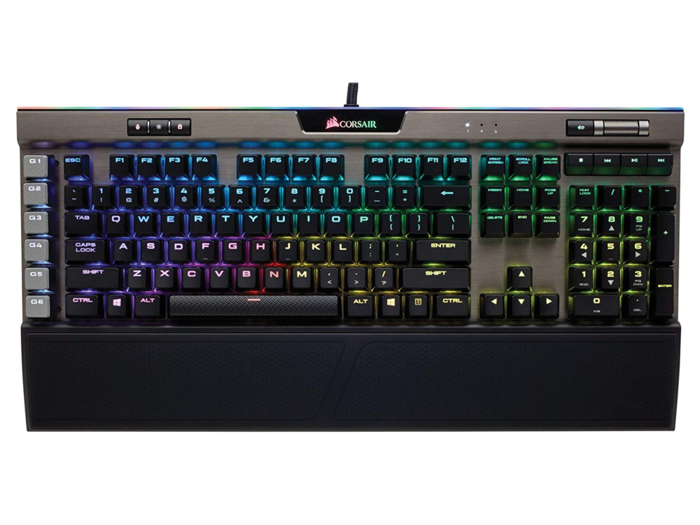
The Corsair K95 Mk.2 is mostly the same keyboard as the K70, with the addition of six dedicated macro keys on the left side. While you could program the switches for faster productivity, the macros have a natural home in games. Whether it's to quickly open chat or access the different features of an MMO (massively multiplayer online game), the K95 gives you full control over the game you're playing.
While the K95 is nearly identical to the K70, it isn't the best all-around option. The K70 comes in a variety of switch types, which makes it an attractive option for typists and gamers alike. The K95, on the other hand, only comes in two flavors: Cherry MX Speeds or Cherry MX Browns. Furthermore, you can only get Browns on the black-bodied version of the K95, the gunmetal version only offering Speed switches. Confusing.
Grumbling aside, that's only an issue for non-gamers. Cherry MX Speeds are a great option for gamers, offering the linear feel of Cherry MX Reds with a shortened stem, which effectively makes them "faster."
The K95 also comes with a multi-zone RGB LED strip on the back with a built-diffuser, which is a feature the K70 doesn't share. This strip, along with the per-key backlighting, can be configured in iCue and synced with other Corsair products.
As a flagship product, the K95 is pretty narrow in its scope. However, if you fit within the parameters it sets, it's the best option around. From the impressive lighting stunts you can perform with the per-key backlighting to the solid build and gaming experience, the K95 should be your first choice for gaming.
Pros: Dedicated macro keys, accent lighting strip, Cherry MX Speed switches
Cons: The size isn't ideal
Buy the Corsair K95 Platinum on Amazon for $139.99 (originally $199.99)The best mechanical keyboard for competitive gaming
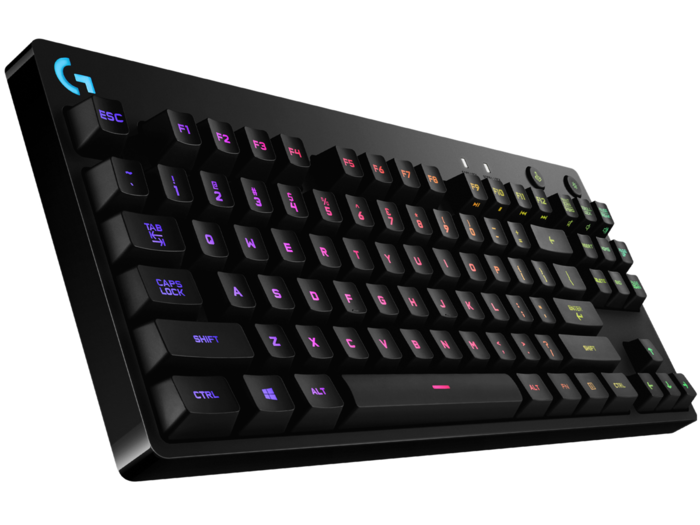
The Logitech G Pro mechanical keyboard was built with competitive gaming in mind. It has a tenkeyless design, meaning there's no number pad to get in the way. The keyboard only measures 14 inches across, too, so it's ultra-compact.
For competitive gaming, that's huge. Pros usually use high DPI settings on their mice and flick it across a massive surface area. The G Pro's compact form factor makes a perfect compliment, allowing pro gamers to utilize the full mouse space they need without fear of running their hand into the side of the chassis.
Of course, competitive gaming is all about performance, and the G Pro smears the competition in that regard. The proprietary Romer G switches have a 1.5mm actuation point, making them 25% faster than the closest competitor. Logitech's improved Keystroke Signal Processing (KSP) can further reduce input latency by up to 10 milliseconds, too.
For non-gamers, the keyboard still functions well, but you won't notice a difference in response time. On the other hand, competitive gamers will have a tangible edge while playing. Furthermore, each switch is attached to the PCB with two contact point, meaning that even if a keystroke isn't registered or there's otherwise a mechanical switch error, it won't show up while you're playing.
Pros: Compact body, fast switch processing, per-key backlighting
Cons: Expensive for non-gamers
Buy the Logitech Pro G Mechanical Gaming Keyboard on Amazon for $108.99 (originally $129.99)The best ergonomic mechanical keyboard
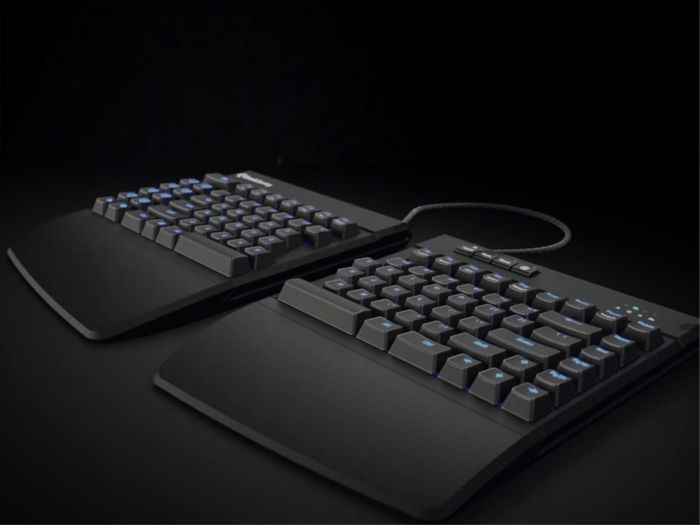
The split keyboard design was first suggested in the 1920s, but it only gained traction after a study by Herbert Kroemer was published 1972. This study propelled the split keyboard design into the limelight, and the subsequent 50 years of research or so has proven that it has a serious impact on ergonomics.
The basic idea is that when you're typing on a normal keyboard, your wrists are angled, which causes strain. A split keyboard breaks the body into two halves, allowing the keyboard to accommodate the natural angle of your arms. Kinesis is a pioneer of this design, offering more than 10 different kinds of a split keyboard.
While the Kinesis Advanatage2 is technically the more ergonomic mechanical keyboard, it has a pretty significant learning curve. The Freestyle Edge, on the other hand, can be adopted in a matter of days. The keyboard is split down the middle and attached with a braided cable. By default, it lays flat on the table, but you can purchase a kit separately that will angle each side by either five, 10, or 15 degrees.
Outside of the flashy design, the Freestyle Edge is a solid mechanical keyboard. It's outfitted with genuine Cherry MX switches — either Blues, Browns, Reds, or Silvers — and comes with eight programmable macros on the left side of the frame. The key switches have blue LEDs on top, too, that can be adjusted to nine different brightness levels.
That's not what makes the Freestyle Edge special, though. Every one of the 95 keys can be remapped to any two functions. These aren't just simple functions like "copy," either. Each key or key combination can be set to a function of up to 300 characters, and you can set the speed in which each function completes.
What's more is that you never have to download any software to program the keyboard. On Windows, the configurator is built-in, and if you're not a fan of going at it through software, you can program all but a few functions on the keyboard itself. Functions are tied to one of up to nine profiles, which you can switch between using the dedicated key, and stored on the keyboard itself. Your macros and keybindings go wherever you do.
Pros: Fully remappable keys, split keyboard design, genuine Cherry MX switches
Cons: At nearly $200, the Freestyle Edge is one of the most expensive keyboards on the market
Buy the Kinesis Freestyle Edge on Amazon for $179 (originally $219)The best budget mechanical keyboard
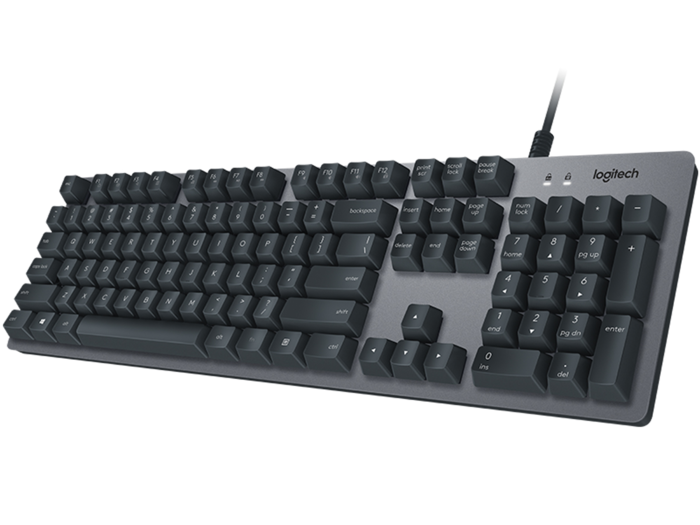
As far as budget mechanical keyboards go, there's only two things to be concerned with: That the switches are actually mechanical, and the keyboard won't fall apart upon your first keystroke. The Logitech K840 not only satisfies those conditions, but exceeds them. While the price tag would suggest otherwise, Logitech's budget-focused mechanical can compete with keyboards that cost twice as much.
Like the Pro G mentioned above, the K840 comes with Logitech's Romer-G switches. Essentially, the K840 is the same keyboard as the G513, which costs more than double the price. The only thing you're missing out on is an admittedly comfy memory foam wrist rest and RGB backlighting.
If you're concerned with functionality, though, the two are exactly the same. The Romer-G switches provide an impressive 70 million keystroke lifespan with a linear feel. Personally, I prefer the more tactile feel of Cherry MX Blues or Browns, as they're what I use every day. Even so, I know some who swear by Romer-G switches and wouldn't trade them for anything, Cherry MX or not.
As far as construction goes, the K840 is solid — literally. The body is made from anodized aluminum so it can withstand even the most instance typing sessions, and the PBT keycaps protect against the natural oils that come off of your hands as you type. The K840 gets everything right from a technical standpoint, and while it lacks the flair of some of the other options on this list, it still provides the same high-quality experience.
Pros: Romer-G switches, aluminum body, programmable macros
Cons: No wrist rest
Buy the Logitech K840 on Amazon for $59.99 (originally $79.99)Popular Right Now
Popular Keywords
Advertisement